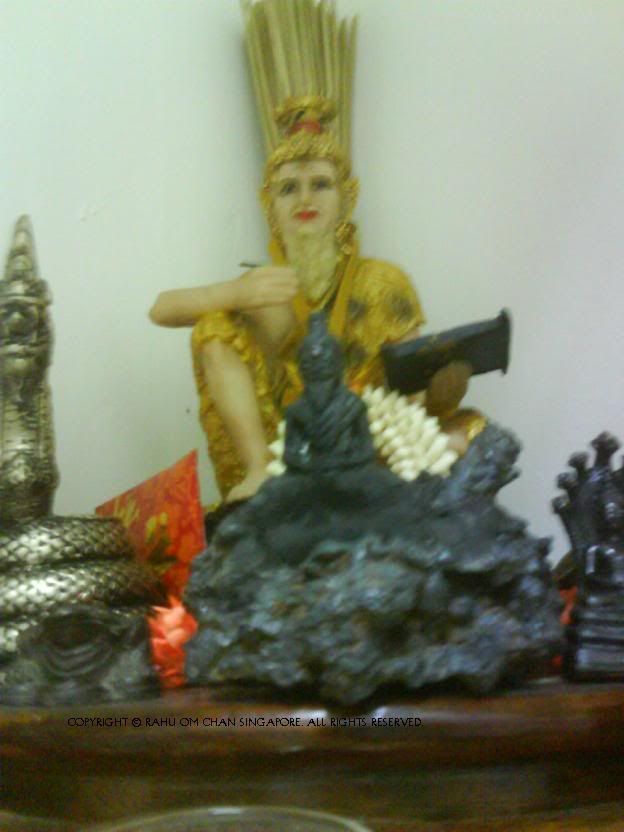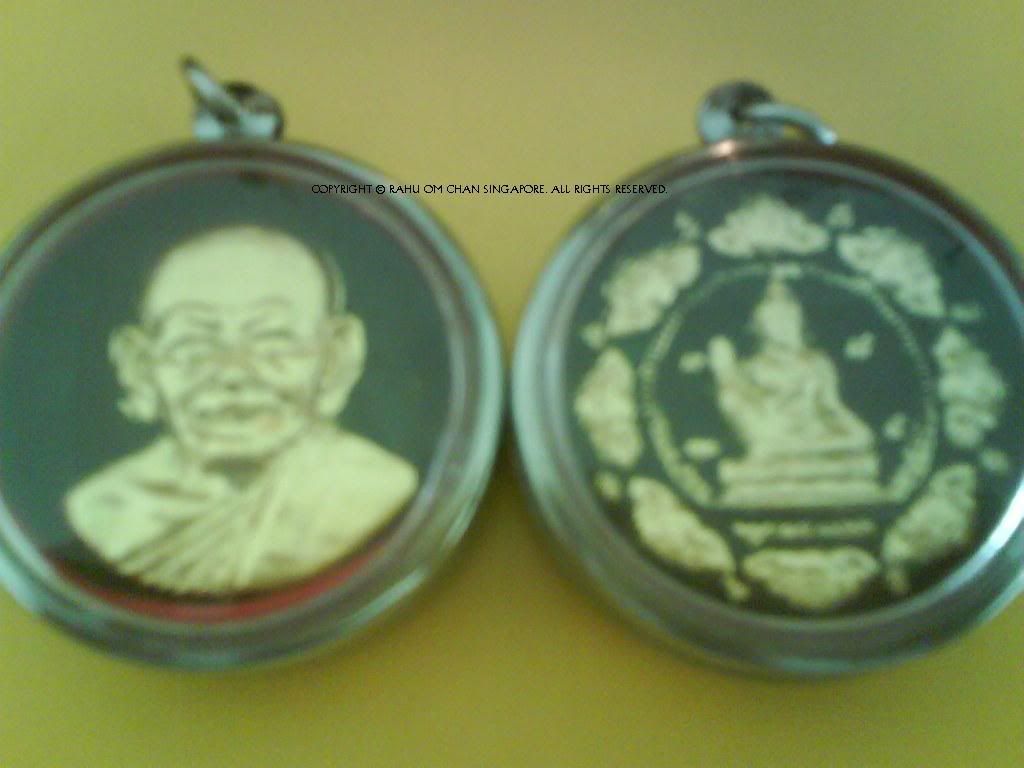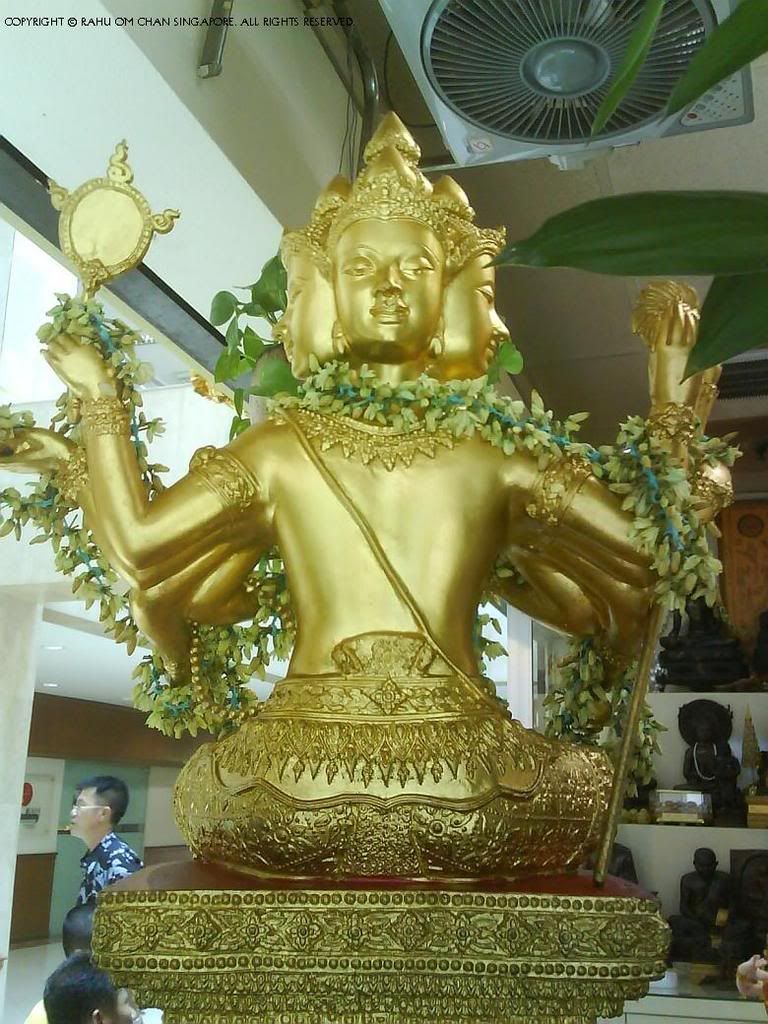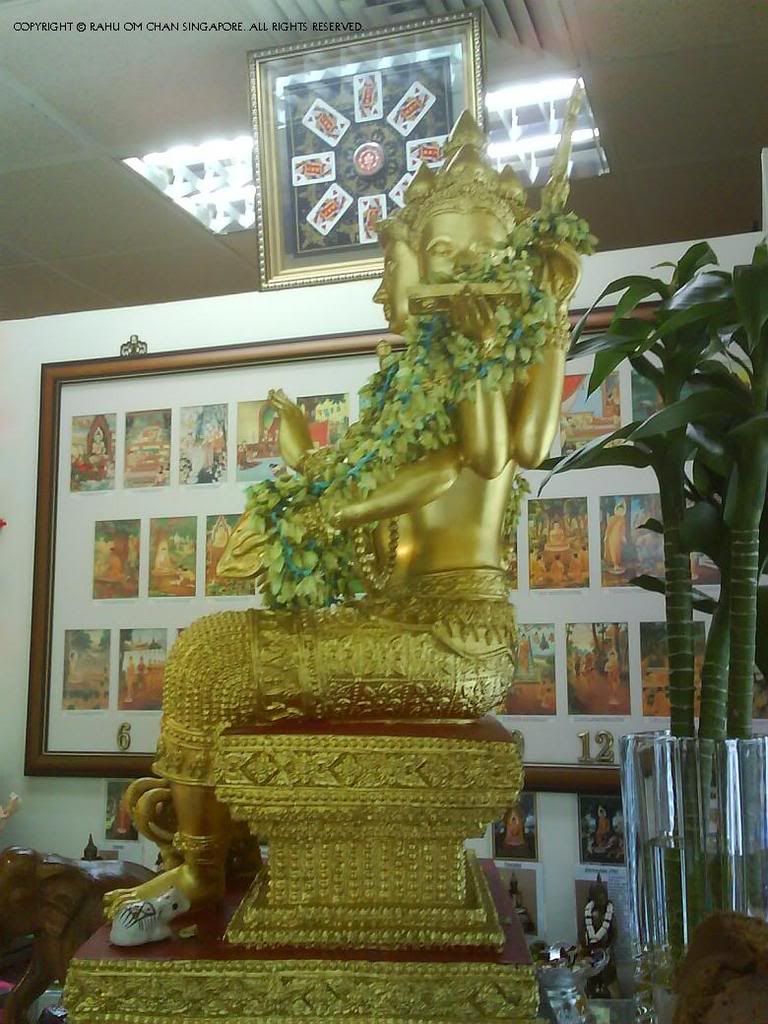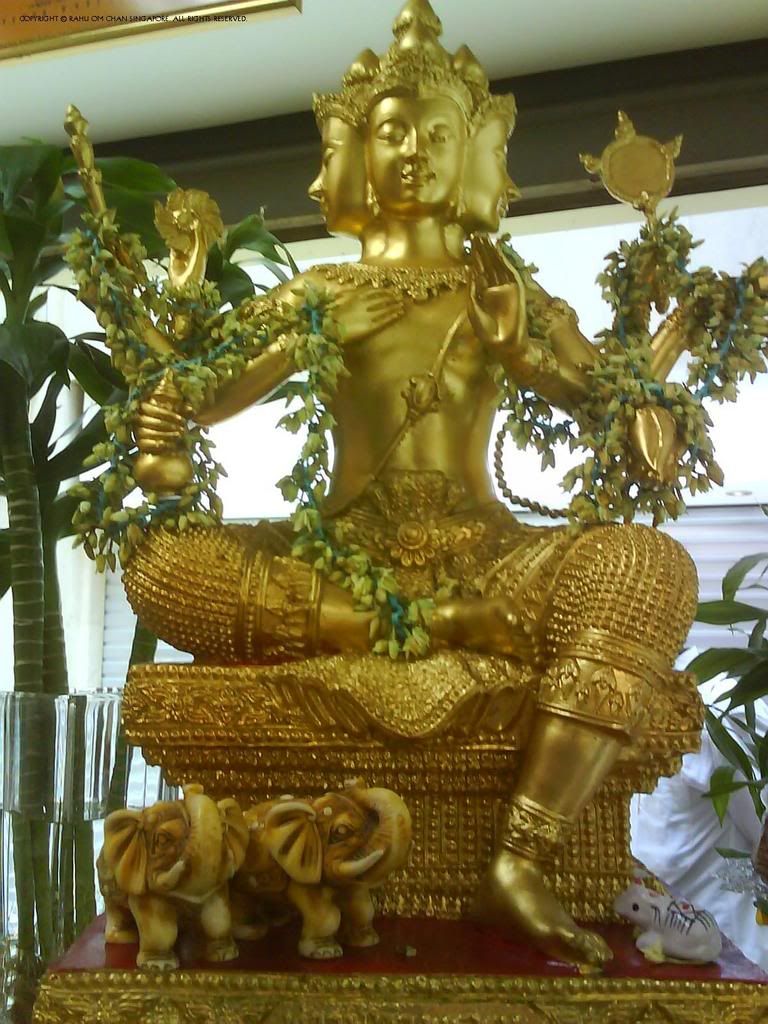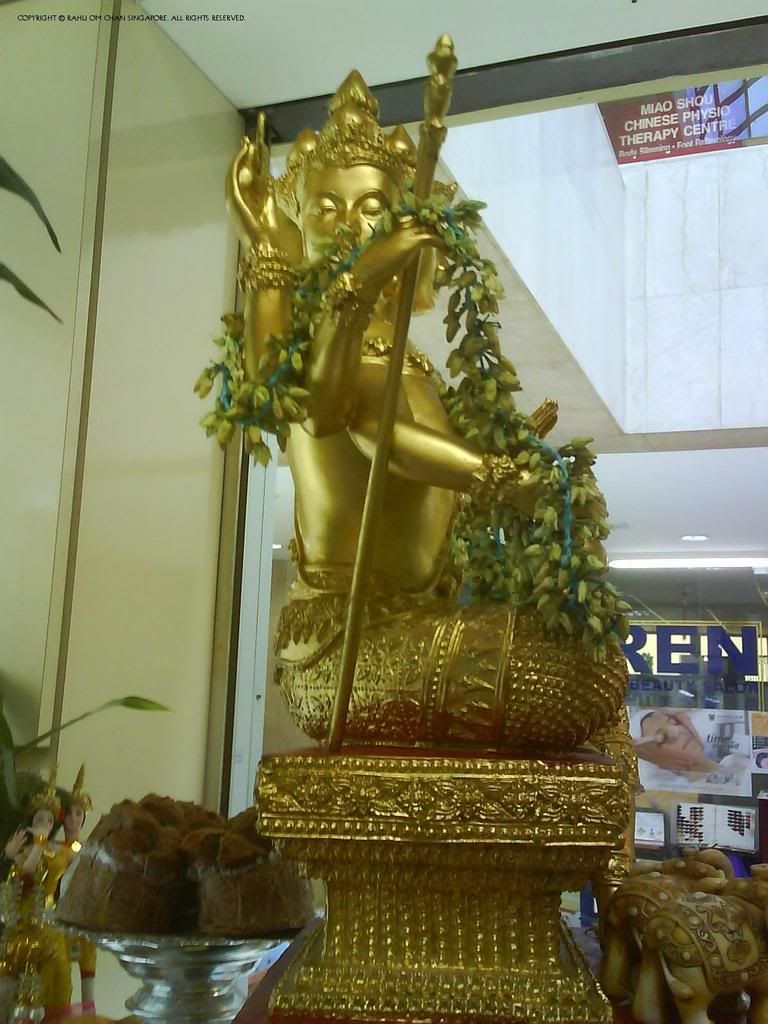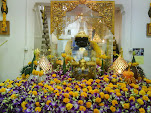
Finally after all the research and help from some contacts from a thai forum, i managed to confirmed that the name of this statue is PRAH NARAI and not Prah Isuan which someone told me. We have this particular statue in our reading room, somehow I think I want to know more about it. And research shown as follow:
PRAH NARAI aka Vishnu standing on his vahana, the Garuda.
- Vishnu is always to be depicted holding the four attributes associated with him, being:
A concj shell or Shankhya, named "Panchajanya", held by the upper left hand, which represents creativity. The Panchajanya is the originator of the five elements or Panchabhoota - water, fire, air, earth and sky or space. The sound that evolves from blowing this conch is the primeval sound of creation.
Ananta Shesha as Brahma emerges from a lotus risen from Vishnu's navel
The chakra , a sharp-spinning discus-like weapon, named " Sudarshana" , held by the upper right hand, which symbolizes the mind. The name Sudarshana is derived from two words - Su, which means good, and Darshan, which means vision. The chakra as a weapon thus indicates the necessity of destroying one's ego and illusory self-existence and developing the vision to identify the eternal truth. The discus has six spokes and symbolizes a lotus with six petals , thus representing the power that controls all six season .
A mace or Gada, named" Kaumodaki", held by the lower left hand, which represents individual existence. It symbolizes the primeval force from which all mental and physical strength is derived.
A lotus flower or Padma, held by the lower right hand, which represents liberation or dispersion. It symbolizes the power from which the universe emerges. It represents the concentration of truth or Satya, the originator of the rules of conduct or Dharma, and knowledge or Gyana in a single symbol.
胡
 On August 28 at 5:52 pm Singapore / Hong Kong time (09:52:22 UT), a total lunar eclipse will occur when the Sun, Earth and Moon align.
On August 28 at 5:52 pm Singapore / Hong Kong time (09:52:22 UT), a total lunar eclipse will occur when the Sun, Earth and Moon align.











